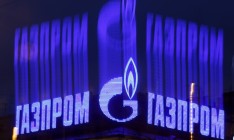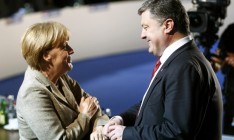Business
Energy resourcesGazprom is limiting supplies to Europe

The Russian monopoly Gazprom is supplying to Europe minimum volumes of fuel envisaged by contracts and is not willing to increase supplies, forcing Europe to stop reverse flow supplies to Ukraine. The official argument of limitation of supplies to European buyers is the primary need to fill its own underground gas storage facilities (UGSF) before winter. However, UGSF of the Russian company will not be able to promptly replenish the gas demand in Europe, if it sharply increases due to cold weather.
Putting pressure on gas
Gazprom continues to reduce supplies to Europe. The Slovak national gas company SPP has registered reduction of supplies compared with the announced volumes by nearly 25% since September 16, while last week the volumes dropped by 10%. Polish gas company PGNiG receives only 19-20 mn cu m per day from the Russian company instead of the requested 28-30 mn cu m and is forced to purchase the rest from companies in Western Europe. To date, five countries, including Germany, Austria and Romania, have registered reduction of supplies from Gazprom.
Co-chairman of the Fund of Energy Strategies Dmytro Marunych told Capital that since the beginning of September, Gazprom additionally pumped 3 bn cu m for export in order to fill European UGSF to the maximum. Instead of last year’s 3.8 bn cu m, it is planning to pump 5 bn cu m for storage in Europe. Marunych believes that after Gazprom increased gas reserves in the European UGSF, it reduced the supplies to the level of contract liabilities without fulfilling additional requests. All this was done to show what awaits those who enter into a conflict with the Russian company. “It must be admitted that everything is being done intentionally under the pretence that the output volumes of the company decreased,” said the expert, specifying that in August Gazprom reduced output by 20% compared with August 2013. Also, the Russian monopoly warned buyers that gas output would be lower than this year: according to the statement of the Head of Gazprom Aleksey Miller, the output is planned this year at 463 bn cu m, while in 2013 the company produced 487.4 bn cu m, which is 0.1% more than in 2012.
False promises
Miller stated that his company is ready to fully satisfy the growth of demand in Europe, but first it wants to fill its own UGSF. “After pumping the required volume into our storage facilities we will be able to satisfy the additional demand of European consumers,” he promised. At that, he noted that the gas reserves in Russian storage facilities currently amounts to 72 bn cu m, which is a record over recent years.
However, partner at the RusEnergy Consulting Agency Mykhailo Krutykhin explained that Gazprom is not capable of operatively reacting to an increase of gas consumption in Europe in winter, using only its underground gas storage facilities. Gazprom could have done it if it was using the UGSF on the territory of Ukraine. However, since it seized to operate in this direction and announced that it would not be using Ukrainian gas storage facilities, it may be unable to fulfill its obligations under contracts in the peak season.
Russian gas storage facilities are not enough to cover both the domestic and European demands. For this, Ukrainian UGSF would have to be used,” said the expert. At that, he reminded that Gazprom had a program of expansion of its UGSF for 2005-2011, but the money allocated for it was used for other purposes. “Russian UGSF were not increased and in Europe Gazprom has small volumes of UGSF, which it obtained through minority ownership and lease,” informed Krutykhin. Marunych agrees with him, adding that in case of extremely low temperatures Ukraine will not be the only one to “feel the cold”. “The history of 2012 is quite indicative. Back then, Gazprom failed to satisfy the demand for gas in Europe even using the Ukrainian UGSF,” he reminded.






 of the agreement of syndication with Financial Times Limited are strictly prohibited. Use of materials which refers to France-Presse, Reuters, Interfax-Ukraine, Ukrainian News, UNIAN agencies is strictly prohibited. Materials marked
of the agreement of syndication with Financial Times Limited are strictly prohibited. Use of materials which refers to France-Presse, Reuters, Interfax-Ukraine, Ukrainian News, UNIAN agencies is strictly prohibited. Materials marked  are published as advertisements.
are published as advertisements.